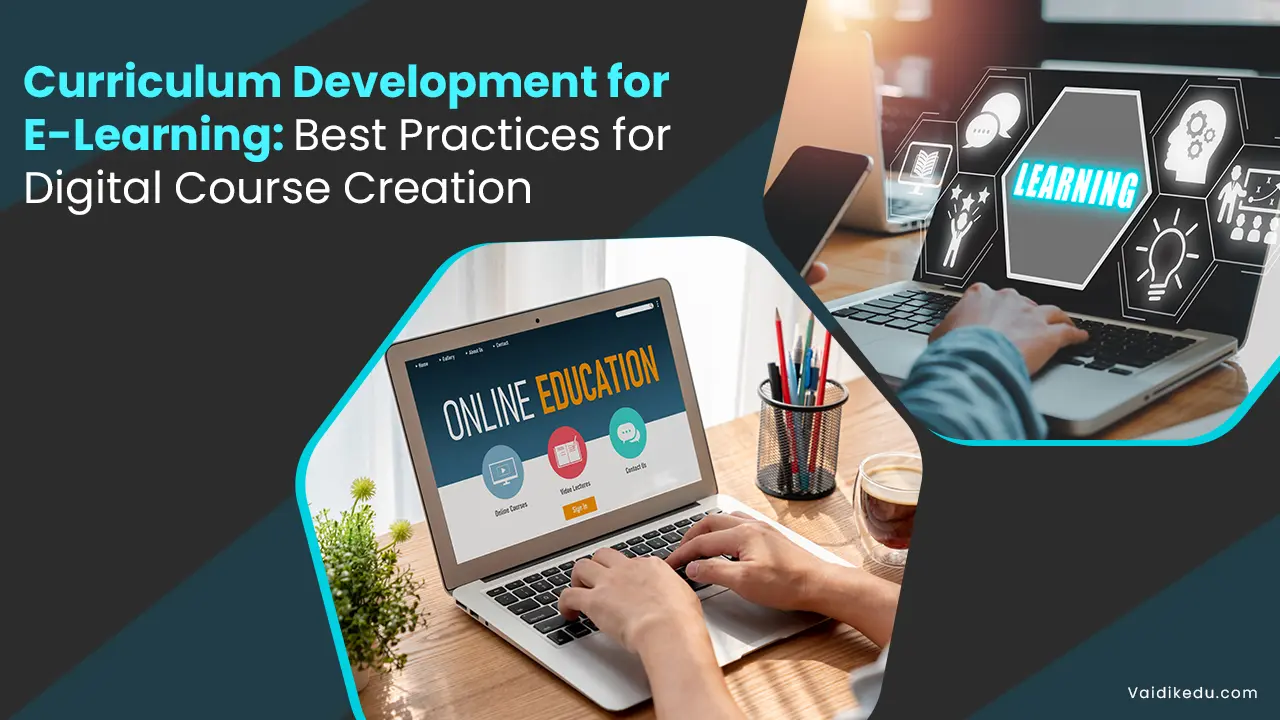The digital revolution in education has resulted in a dramatic shift in learning. As education moves online, more dynamic, flexible models that position students at the center of the learning process are progressively replacing traditional, teacher-centered systems.
This paradigm shift is especially important when educators strive to engage students in meaningful and productive ways. Learner-centered instructional design Development, which emphasizes tailoring the educational process to each student’s particular requirements, preferences, and abilities, is the concept underlying this development.
The importance of learner-centered design in online courses cannot be overstated because it increases student engagement, promotes deeper knowledge, and empowers them to take control of their education.
In traditional face-to-face learning environments, teachers often establish the rules for the pace, topic matter, and teaching methods. Despite its benefits, this approach might not be as effective in online settings because students usually have more control over how, when, and where they engage with the course materials.
In online classes, where communication may be more limited and students may face more distractions, it is crucial to design learning experiences with the learner at the center. This approach fosters a sense of autonomy and responsibility for one’s education in addition to increasing involvement.
Additionally, by considering the individual learning needs and preferences of every student, learner-centered instructional design helps to create more equal and diverse educational experiences.
The intrinsic adaptability of online learning environments presents opportunities as well as difficulties for instructional designers. On the one hand, group projects and interactive multimedia are just two of the many tools and resources that online courses can offer to satisfy the diverse needs of students.
However, it could be more difficult to gauge student interest and provide individualized support if there is no face-to-face interaction. In this case, learner-centered instructional design is essential because it encourages the use of tactics that support student autonomy, provide timely feedback, and encourage peer cooperation. By using these techniques, online instructors can create learning environments that are both fruitful and enriching for students.
An understanding of instructional Design That is Learner-centered
The core idea behind learner-centered instructional design is that rather than passively receiving information, students learn best when they actively engage in the learning process. Creating educational opportunities that encourage critical thinking, self-directed learning, and significant student engagement is highly valued in this model.
Creating personalized, adaptable, and interactive learning pathways that enable students to study at their own pace in accordance with their particular needs and interests is the aim of learner-centered design in an online context.
One of the fundamental principles of learner-centered instructional design is that students should be viewed as active contributors to their education rather than passive recipients.
This approach suggests that the role of the instructor should shift from being the primary source of knowledge to that of a facilitator who provides guidance, resources, and feedback to aid students in their learning. This modification gives students the freedom to direct their own learning, select their preferred method of study, and engage with the content in a way that appeals to them.
In practice, learner-centered design integrates several key components. It first recognizes the diversity of learners by utilizing solutions that take into account different learning preferences, methods, and levels of prior knowledge.
For example, some children would learn better through visual aids, while others would benefit more from aural or kinesthetic methods. To accommodate these differences, instructional designers might utilize multimedia elements such as movies, infographics, or interactive simulations to present information in a number of ways.
Second, learner-centered design encourages collaboration and participation from students through discussion boards, group projects, or peer reviews. This social aspect of learning is extremely important because in online courses, students could otherwise feel isolated.
Finally, because it helps students track their progress, identify areas for improvement, and find motivation to keep learning, feedback is crucial to the learner-centered approach.
One of the most important elements of learner-centered design is the concept of self-regulated learning. When attending classes online, students usually have more control over their learning schedule and pace.
Kids must learn how to establish goals, manage their time, and monitor their progress even though this independence can be empowering. By empowering students to take control of their education, self-regulation-promoting instructional design increases the possibility that they will persevere and succeed.
This can be accomplished with the use of tools that help students develop their time-management and organizing skills, opportunities for self-reflection, and clear learning objectives.
The Impact of Learner-Centered Design on Online Courses
Learner-centered instructional design has a big impact on how effective online courses are. By tailoring learning experiences to each student’s needs and interests, this approach can boost student engagement, promote deeper learning, and enhance student outcomes.
One of learner-centered design’s primary benefits is an increase in student motivation. When given the opportunity to make decisions about their education, students are more likely to feel involved in the process.
When students have a sense of ownership, they are more likely to see the relevance of the course material and feel motivated to succeed, which boosts intrinsic motivation.
Student engagement and motivation are both increased by learner-centered design. In typical lecture-based courses, students usually read textbooks or passively listen to lectures, which can lead to disengagement and shallow learning.
Conversely, learner-centered online courses encourage active participation through discussions, interactive exercises, and group projects. These exercises push students to think critically, apply what they have learned, and engage with their peers in order to learn more thoroughly and remember the information better.
Students can also engage with the material in ways that best suit their individual learning styles thanks to the flexibility of online courses, whether that be through interactive assessments, readings, or videos.
Learner-centered design in online courses also has the significant advantage of promoting inclusivity and accessibility. Online learning environments provide for greater flexibility in content delivery, which is particularly advantageous for students with a variety of learning needs.
For example, students who require additional time to absorb information can pace themselves, while those who require more assistance can access additional resources such as tutoring or instructional videos.
By providing several pathways to learning, instructional designers may create more equitable and accessible educational programs that guarantee every student has the opportunity to achieve.
Conclusion
In the rapidly evolving realm of online education, learner-centered instructional design is an essential strategy for creating successful, engaging, and accessible learning experiences.
By placing them at the center of the educational process, this approach empowers students to take control of their education, fosters critical thinking, and develops teamwork. Additionally, because students have more control over their study schedule and pace, it promotes self-regulated learning, which is crucial in virtual learning environments.
As the demand for high-quality online education continues to grow, instructional designers must prioritize learner-centered techniques to keep students engaged, engaged, and successful in their learning journeys.
Frequently Asked Questions
Providing learning experiences that are tailored to each student’s needs, interests, and abilities is the aim of learner-centered instructional design. It strongly emphasizes teamwork, self-control, and active engagement in order to foster deeper learning and student involvement.
Learner-centered design is essential in online courses because it helps address the unique challenges of online learning, such as student disengagement and the lack of face-to-face connection. This method puts students first, which increases motivation, encourages active learning, and results in a more individualized educational experience.
Learner-centered design increases student engagement by encouraging active participation through interactive activities, debates, and group projects. By requiring students to apply their knowledge, practice critical thinking, and interact with their classmates, this approach fosters deeper learning and better information retention.
Multiple learning pathways, a range of teaching techniques to suit various learning styles, and chances for cooperation and feedback are all ways that instructional designers can produce learner-centered online courses. By establishing specific goals and assisting students in honing their time-management and organizing abilities, they should also promote self-regulated learning.









